|
The word NUC is an abbreviation of the word nucleus. Nucleus is a smaller colony of bees created from a larger colony of bees. A nuc has 4-5 frames of bees, brood, honey, pollen, and a mated and laying Queen. When you purchase a nuc, you are purchasing frames of bees that need to be transferred into a deep box. A box that holds 10 frames. The plastic nuc box is not a permanent home for the bees. Bees need space to grow over the year. If you purchase a nuc, you will need to purchase all the remaining equipment such as: 2 deeps with frames, 2 supers with frames, a bottom board, a telescoping lid, all your beekeeping tools and a beekeeping suit. I sell nucs and I also sell single box hives. What’s the difference? A single box hive has more frames of bees - a full hive in fact. The frames are inside a deep box that the bees will stay in permanently. The single box hive also comes with a telescoping lid, a bottom board and a feeder. If you purchase a single box hive, you will need to also purchase a second deep with frames, 2 supers with frames, all your beekeeping tools and a beekeeping suit. Or you can purchase our Deluxe Beehive Kit that has EVERYTHING you need to start, and you will not need to purchase anything else! The Deluxe Beehive Kit has a full hive of bees, living in a deep box. You also receive a second deep box with frames, 2 supers with frames, all your beekeeping tools and a full beekeeping suit. Everything is also assembled and painted, ready to use! Hopefully this helps answer a lot of your questions about ordering bees! I know it can be a bit confusing and overwhelming to start. Remember: shop small • shop local • shop American! “How much does it cost to start beekeeping?” I’m asked this question a lot. Here’s my answer in a blog post.
Bees cost - at minimum - $1,000.00 to start. I know it’s shocking to hear that, but it’s accurate. When I started beekeeping 7 years ago, I had no idea bees were so expensive. I thought the same thing some of you are thinking reading this…”why are they so expensive”? Then I started the beekeeping business, and I started buying things as a retailer. I figured out really quick that wholesale costs are not much cheaper than retail costs. If you don’t believe me, call Mann Lake or Dadant and ask them what kind of price break their dealers get. To be honest, there’s not a lot of profit in this industry. Not for someone like me who isn’t a commercial beekeeper. I know profit/loss because I’m an accountant by day. The purpose of this business for me is not solely profit. If it was, I would have closed years ago. This business is a mission for me. My goal isn’t to run hundreds of colonies or make thousands of dollars. My goal is to help make thousands of beekeepers. When I set my pricing for the year, I go as low as I possibly can and still remain somewhat profitable. There have been years where I broke even, not going to lie. But here’s the great part – bees are absolutely amazing. The things they do amaze me constantly. They also provide so many wonderful things. Honey, Pollen, Propolis, Beeswax…and most importantly – more Bees! If you have 1 hive, you can split it into 2 the next year. Then that 2 can become 4, and so on. Those splits make money back on your initial investment. Not to mention selling honey, beeswax products, pollen granules, propolis tincture, etc. The hobby can pay for itself over time if you let it. Pollination of your crops is also a HUGE help! Having bees triples your yield. After the initial sticker shock wears off, you will see that it’s one of the most rewarding hobbies you can have. I promise you that I am not a greedy, profit focused person. My intentions are pure, and my prices are thought about and analyzed in great length. I use a local vendor for the bees, and I try to use American made products every chance I get…both costing me more money. I also tell anyone and everyone that if you have the skills to make your own boxes, do it. If you have swarm traps and land to put them on, find free bees. Not everyone has the ability to make their own stuff or set swarm traps up. Or maybe you want to support my local bee business, just like I support my local vendors. 😊 In closing, I will say that I stand by my pricing. My kits are a great deal. If you buy all the items separately you will spend more than buying one of my kits. And, in a few months, after you are home with your new bees, guess what? I’m available to answer your questions. I doubt Amazon has a “beekeeping help desk” ha-ha! Thanks for the read and thanks for supporting small business. We are slowly disappearing for sure. Beekeeping is 60% knowledge, 30% weather and 10% trial and error.
I sell bees, I sell honey and I teach beekeeping.
I do NOT remove yellow jackets, wasps, carpenter bees, bumble bees, hornets OR…and I want to emphasize this, “BEES LIVING INSIDE YOUR SIDING OR WALLS.” I am not licensed or insured to do honeybee extractions. What does that matter? Well, if I were to come onto your property and I was up on a ladder and fell off breaking both of my legs, who is going to pay for that? Me? The homeowner? I guarantee that would be a lengthy lawsuit. And on the flip side, what if a beekeeper goes digging into your siding and causes major damage? Who is paying for that? Again, another lengthy lawsuit. A homeowner should want a business that is licensed and insured, and a beekeeper should want that coverage as well. A “free colony” isn’t worth the risk. Please call MIDWEST BEE REMOVAL: 816-217-4214. They will provide you with bee removal services. What’s a nuc?
The word nuc is an abbreviation of the word nucleus. Nucleus is a smaller colony of bees created from a larger colony of bees. A nuc has 4-5 frames of bees, brood, honey, pollen, and a mated and laying Queen. When you purchase a nuc, you are purchasing frames of bees that need to be transferred into a full hive box. A box that holds 10 frames. The nuc box is not a permanent home for the bees. Bees need space to grow over the year. If you purchase a nuc, you will need to purchase all the remaining equipment such as: 2 deeps with frames, 2 supers with frames, a bottom board, a telescoping lid, all your beekeeping tools and a beekeeping suit. I sell nucs and I also sell single box hives. What’s the difference? A single box hive has more frames of bees - a full hive in fact. The frames are inside a deep box that the bees will stay in permanently. The single box hive also comes with a telescoping lid, a bottom board and a feeder. If you purchase a single box hive, you will need to also purchase a second deep with frames, 2 supers with frames, all your beekeeping tools and a beekeeping suit. Finally, we have the full hive kits I sell. They are a full hive of bees, living in a deep box. You also receive a second deep with frames, 2 supers with frames, all your beekeeping tools and a full beekeeping suit. If you purchase a full hive kit, you will not need to purchase anything further. It has everything you need. Everything is also assembled and painted/stained. The difference in the full hive kits I sell are the wood types. I have Red Cedar, Barnwood and Painted White Pine. It’s all a matter of your personal preference! Hopefully this helps answer a lot of your questions about ordering bees! I know it can be a bit confusing and overwhelming to start. In closing, I'll add that bee pickups happen in May! I will know the exact dates by April 1st. We have to wait and see what the weather does. Bee orders start the previous October and typically last through April or even May. It just depends on when we sell out. Thanks for your interest in starting up beekeeping. The world needs your passion and love for the bees!!! Remember: shop small • shop local • shop American! I’ve been operating this bee business for almost 6 years now. In that time, I’ve sold bees to over 1,000+ different people. I would say 80% have been brand new beekeepers. That is so awesome by the way!!
This exposure to new beeks has been a beneficial experience for me. Beneficial, in that it has taught me how I can teach new beekeepers in the best way. I have created 3 very informative classes. Classes that are taught in stages. I believe there is a lot to learn with beekeeping, but if you take it slow and learn over time, you will have much more fun with this hobby. My classes, along with their descriptions are as follows: Introduction to Beekeeping: This class is for people who are interested in beekeeping but have never had bees. Common questions like: “how much time is required to care for the bees, what all is needed to start a beehive and how much does it cost to start a beehive” will be answered with this class. Also, honey production will be briefly covered. First Year Beekeeping: This class is for people who have just started their first hive. Class will cover inspections, mite treatment, honey extraction in detail, fall management and winter preparation. This class basically covers the care of a new hive from May all the way through to November/December. Second Year Beekeeping: This class is for people who have bees going into Fall and want to learn all about how to care for them in the Spring. Class covers the different methods of splitting a hive, swarm prevention, mite treatment and spring feeding. While I’m excited to offer Introduction to Beekeeping and First Year Beekeeping recorded through zoom, I feel that Second Year Beekeeping is best taught live. Class dates and times are posted on Facebook, so please make sure to follow The Kansas Bee Company’s page. I also offer all 3 of these classes to groups! Please contact me for pricing. 816-739-0726 Link to classes: https://www.thekansasbeecompany.com/classes.html Thanks!! Today is Thursday, July 15th and the honey flow is over. It’s actually been over for a couple weeks.
I’m getting a lot of calls or messages about adding a honey super now. The simple answer to this question is no. The more detailed answer is, there is no need to add a honey super when you have no excess honey coming in for the bees to fill it. I started a hive in May while all my customers did. I do this every year so I can see for myself how fast/slow the bees are growing in a particular year. We had an incredibly low and slow honey season this year. At least I did in my part of Missouri. Nothing compared to what I saw last year. In my hive, I am happy to report both deeps are full of brood, eggs, and honey. That is the goal of any new hive. Remember when I said that honey in your first year is a blessing? Adding a super now will only create more empty space in a hive and give the bees that extra space to protect, especially from hive beetles. As the honey flow stops, we start something called dearth. This is a scarcity or lack of nectar sources. The bees will start eating their stores now. This is nothing to be alarmed over, just make sure you are monitoring the honey that’s stored away. If it gets low, feed your bees! We may get a fall flow. It’s hard to tell right now if we will, but if we do, that will be the time to put a honey super back on. Only do this though if your bees have enough food in their 2 deeps. The bees winter food, their 60 pounds, is the most important thing for the beehive. Your friends and family can wait until next year to get some honey! I know they are asking, haha!! The next thing you need to focus on is mite treatment. If you have any questions about this, please consider taking my First Year Beekeeping class. I explain mite treatment, along with Fall maintenance and winter preparation. Hope you all are staying cool and enjoying your new bees! When COVID hit in 2020, the country went into survival mode. Small business was hit pretty hard. My bee business was majorly affected, and still is - to be perfectly honest. 2021 has been the worst year this business has seen in 5 years. Bee sales and honey sales plummeted.
All the retail stores I had honey in closed temporarily. I decided at that time to build an “honorable honey box.” I placed this box at my house on the street. At first, it was successful. People were buying honey all the time and they were paying me the exact amount owed. Then, it started to change. People started putting $10 bills in for $14 or $20 bottles of honey. They either weren’t paying attention to the well-marked prices, or they just decided they shouldn’t have to pay full price? Unfortunately it escalated to people stealing bottles of honey. In fact, I put a bag of seeds in there for someone who pre-paid and they were stolen before she was able to pick them up. This last Saturday, I went to check the honor box. As I was walking up to it, I knew something was wrong. The cash box was wide open. Someone had broken into it and stole an entire days’ worth of cash sales. Imagine being a small business owner, having a rough year financially, and having a day’s worth of sales stolen. I was PISSED! I made a live video saying things I probably shouldn’t have, but to be honest with you, I don’t care. That theft was my last straw. I have probably lost close to $200 in that “honor” box!! I emptied it out and will no longer be using it. I’m not going to continue to be stolen from. Since the box is gone, there is no longer any reason to pull into my driveway. I’m putting up 2 big “no trespassing” signs. Why?? Because, on top of having theft, there is an issue of people coming up to my front door. This is my home; this isn’t a brick-and-mortar store with hours. The people who ring my doorbell, want to discuss starting up beekeeping. While I am always supportive of anyone starting this amazing hobby, teaching people beekeeping in my front yard is not how this works. I have an online "introduction to beekeeping" class for that. Not only are people coming up to the door, but they are also walking the property looking for bees. The only time that anyone should ever be on my property is during bee pickups! Running an online bee business out of my home is not an invitation for people to visit. Not only is it an issue of boundaries, it's also a liability issue. In closing, I have a business email and phone number you can use to contact me. [email protected] and 816-739-0726. This allows me to have a separation of my business and my personal life, which is a very important boundary to have. :) :) I know how frustrating and sad it is to lose bees. The feeling you get when you open the lid and they are all dead, or just simply gone is one of despair. The first thing you want to do is understand why. Hopefully after you read this blog, you will have understanding and hope to try again. Here are the top 4 reasons people always assume their bees died:
Unless you did not listen to the guidance of every beekeeper out there about leaving them 60 pounds of honey, your bees did not starve to death. Bees move in herds. They don’t just send a few up or around the 2 deeps looking for food. They feed in herds. And, in the middle of that herd is the queen. They must get her to move with them, or they will not move at all. This is where a big cluster comes in real handy. The bigger your cluster inside the hive, the more opportunity they have to herd onto a spot of honey. Many times, beeks will call me and say they starved to death, but they had a ton of honey. As confusing as this is, they did starve to death, but also, they didn’t. They simply didn’t have a big enough cluster to get to the honey. Wax Moths: I want you to read this out loud and repeat it, “Wax moths can’t kill a healthy hive”. Repeat! Wax moths are a clean up crew. If you see wax moth trails in your comb, your hive is already weakened to the point of not being able to defend itself. Hive Beetles: Again, read this out loud and repeat it, “Hive beetles can’t kill a healthy hive”. There is absolutely nothing you can do about hive beetles, except keep their population down. They are going to be in your hive no matter what. A strong, healthy hive will keep their numbers at bay. There are some tricks you can implement to help the bees keep the hive beetle numbers down and they are inexpensive. I haven’t used anything in 2 years. They froze to death: A beek will call me and say, “my bees froze to death because they still had a lot of honey…therefore, they couldn’t have starved to death.” Refer to the starved to death paragraph above. Bees are good at keeping themselves warm. In fact, they are so good at it, they will simply stay in their cluster and not move an inch to get food, therefore letting themselves starve to death. Why? Because they aren’t thinking about their lives, they are thinking about the life of the queen who is in the center of their cluster. So, what killed my bees? Your beekeeping methods throughout the year. Am I saying this to make you feel bad, NO! I’m saying…losses are lessons! Don’t beat yourself up. You are new to this hobby and you are learning as you go. The cluster in fall is the survival of winter. The cluster in fall is a direct correlation of how you cared for them all spring/summer. Here are my tips: Feed if and when the bees need it! If the honey supers aren’t on, and they aren’t building up 60 pounds, feed them. Add essential oils for their guts. TREAT FOR MITES! I blog about how I treat. I am aggressive with it. And you know what, I lost 1 hive this year. And, that was to robbing. I know that a lot of you don’t want to put chemicals in your hive, and I understand that philosophy. But, I’m going to tell you that sometimes we have to fight fire with fire. Chemicals are everywhere now. So, take your frames from your dead hive and throw them in the freezer. This kills any kind of larva living in the comb. Remove them after 24 hours and store them in your garage with some paramoth or wax crystals. Freeze 1-2 frames at a time if your freezer space is small. Finally, start over. Buy a NUC, or a full hive and try again. Don’t just give up after 1 year. It takes time to learn something new. If at first you don’t succeed, try try again. Congratulations, you made it to Fall!!
Your brood should be picking up substantially, as the queen is laying her winter babies. Winter babies are the bees that are going through winter with her, keeping her nice and warm in the center of their cluster. You should start to see drones being killed. They are just extra mouths to feed, so they are not allowed to winter with the hive. Sad, but it’s nature. Your honey should be plentiful. We had an amazing honey production year! I do want to caution you that amazing honey years don’t happen every year. So, please don’t go into next Spring with unrealistic expectations of what you’ll be able to give away to all of your friends and family. Remember you need 60 pounds of honey for the bees to eat throughout winter. How do you know if you have 60 pounds? First, you can do a lift test. Lift your hive from the back…not all the way, just tilt it up. Does it feel super heavy? Brood has weight too, so it should feel like it well exceeds 60 pounds. Next, get inside and take a look. The honey frames are typically your outer frames. If that isn’t the case in your hive, rearrange your frames. Brood in the center, honey outside. Some empty cells are needed as the queen is still very much laying eggs (remember, winter babies). In my first year of beekeeping, I lost 2 hives to mites – in the fall. The 2 hives absconded, leaving behind all their honey. I decided that instead of freezing these frames, I’d just jam pack my remaining hives that were still around with all this “extra” honey. Seems harmless right? I came out a couple weeks later to inspect and every single remaining hive had absconded. Apparently, since I didn’t leave any drawn comb, or open cells for the queen to lay eggs in, the became honey bound and left. If you’ve ever heard me speak, you know that I am the beekeeper who has done everything wrong at least once, sometimes twice. So, back to formation. Honey on the outer frames, brood in the center. Why? Well, first you want all your brood together as it gets colder, so they can cluster around it and keep it 92 degrees. Second, you want all the honey together, so when they do move in cluster formation throughout winter, they can keep that formation and not break cluster. Make sense? Good. 😊 Let’s go back to 60 pounds of honey. What if you don’t have it? You need to start feeding, and right away. Try a 3:1 ratio. 3-parts sugar, 1-part water. If they don’t eat it, try 2:1. They should be gobbling up 3:1 if they are light on stores though. Lastly, your hive should be in 2 deeps right now. The supers don't stay on for winter. You should also have your entrance reducer on your fall setting. Example below! If you have a super on for additional feed, that's ok! But, if you are not at 60 pounds of honey by now, you will want to feed on top of leaving that super. The bees get to a point in the season where they stop backfilling your deeps with honey. I’ll be blogging about winter feeding soon, as that is a whole other way to feed. Right now, we are still feeding liquid syrup. Keep your texts, emails and phone calls with questions and updates coming! Love to hear from all of you!! The definition of dearth is “a scarcity or lack of something”. When beekeepers use this term, we are referring to a lack of floral sources for the bees.
We use the word dearth as a reference of time. Meaning, right now we are in dearth in Kansas and Missouri. The bees have stopped bringing in nectar to store for consumption. That means, they will start eating their previously stored honey. As they eat their stored honey, it will open cells for the queen to lay eggs in. This is especially beneficial going into fall/winter. Dearth is a normal part of beekeeping but can bring about mood changes in your bees. I often hear, “my bees were sweet all year and now they’re just mean”. The girls are very aware that they have honey to protect. So, they are defensive. Imagine working all summer to store honey and having a giant being opening your storage area and touching all your hard work. What do you do now as new beekeepers? Just keep on doing your weekly inspections – looking for eggs. If you have empty supers on, remove them. We are done with the flow for now. We may have a fall flow but wait until there is one before you put your supers on. Why? Because all that empty space is where the adult hive beetles like to congregate. It’s time to start planning your mite treatment. Strips aren’t beneficial right now because there isn’t a whole heck of a lot of capped brood yet. I’ll be doing my OA treatment in the next couple weeks. Refer to my previous blog about mite treatments to get the details on what I do. Remember, these are your bees though, so you do what you feel is best for them. All I can do is tell you what I do. In closing, I want to say that this has been a rough summer for yours truly, but I am a firm believer that everything happens for a reason. My back injury led me to a new primary care doctor. This primary care doctor ran blood work which came back irregular. Basically, my thyroid was not working. Further tests were ran, including a sonogram of my thyroid. Four large tumors were discovered. I recently had my thyroid removed and one of the tumors came back positive for cancer. It is a blessing that my thyroid and all the tumors are now gone. I’m sharing this because I haven’t been as available by phone, text, email, etc this summer as I normally am. Sometimes you have to take a break from everything and focus on your health. Several of you have sent me wonderful messages. You’ll never know how much that has meant to me. I love all of you and I hope your bees are doing well. I’m back doing consultations now, so call me if you need me to come out and look at your hive and give you some pointers. Sometimes I simply provide peace of mind that your hive is doing well. 816-739-0726. I charge $100 to come out, if you are within 30 minutes of Belton, Missouri. Thanks! Honey Bound Hives
What is a honey bound hive? It’s a hive that has too much honey stored in the deeps and therefore it is bound with honey. When this happens there is no space for queenie to lay, and there’s a chance the hive will abscond. Abscond is when the whole hive leaves, not just ½ in a swarm. Why do they abscond and not just swarm when this happens? Because if there’s no room for the queen to lay eggs, they can’t make several replacement queens, so they just simply leave. Everything in a hive is about balance. Enough honey, enough pollen, enough eggs, enough capped brood and enough room. Sounds complicated right? I think the bees know what they are doing, but sometimes a little help from us isn’t a bad thing. What we love to see as beekeepers is honey on the outside frames, with capped brood in the center. 4 frames of capped brood in each deep is wonderful. Does that always happen? Heck no, haha! If your top deep is all honey, that is not surprising at all. I’ve seen that several times. As long as you have capped brood in the bottom deep, you are looking good. But, the pain is you have to lift off the top deep to inspect. Here’s what I do if I see all honey in my top deep. I remove a couple of the frames in the center and give them empty frames. I then leave those honey frames out and let them clean them up. Hopefully they will use this honey to build comb on the new frames you’ve just given them, and the queen will use those to lay eggs in. I will say that this year has been a phenomenal honey year. I haven’t seen this kind of honey production since I started beekeeping. The white dutch clover has come back at least 5 times where I’m at. Normally it comes back twice. What that means is, if you mow white dutch clover, it’ll bloom again. So, if you aren’t seeing full capped brood frames, don’t worry. The bees are bringing in honey so fast this year, they are just storing it in cells faster than the queen can lay eggs in them. The flow is coming to an end and this will take a wild turn soon. They’ll start eating or backfilling some of the honey they’ve brought in, giving her space to lay. Remember, it takes 6-8 pounds of honey to make 1 pound of wax and they need all that wax to cap that wet honey. This year, we needed a ladder to look at our supers! I’ll post how many pounds we got once we extract it all. The main reason that we encourage people to start with 2 hives instead of 1 is so that you have extra resources. I use the phrase, “rob peter to pay paul” quite often. That means if one hive has an abundance of honey, you can shake the bees off and give it to another that may be lacking. In fact, come late Summer or “dearth”, you will want to try and make your hives even. This helps with robbing.
A secondary reason to have 2 hives is to compare how different hives can be. I know that a lot of you want to see the same exact progress in all your hives, but unfortunately that isn’t going to happen. You will have one hive that just looks amazing. There will be lots of eggs, capped brood, larva, honey and pollen. And there will be one that struggles along, building slow. I’ve seen this every year. I’ve also seen an amazing hive slow down later in the season and the weaker one start to blow up. And, by the time late fall is here they are pretty much even in progress. I know you want to monitor their progress and you get concerned when you don’t see immediate growth. Just bee patient. Comparing a wild hive or swarm to a nuc or hive from me is not going to be a good comparison. Swarms are eager to build comb, so they will grow super fast. Trust me when I say, they slow down eventually. In closing, I want to say that right now my bees are seriously bringing in the honey. They aren’t a bit interested in my sugar water. So, if your bees are the same, don’t worry. Let them bring in their honey and the minute the honey flow stops, try feeding them again. Keep looking for eggs once a week. If you can’t see them, take a picture and enlarge it when you are inside. Take 100 pictures if you have to. Remember, the first year is all about learning! Sometimes queens die. Sometimes it happens in transportation, sometimes she dies in an inspection, sometimes she rolls off a frame. I've had all 3 of these things happen.
Knowing how long things take helps you predict where things are going or where things have been. If you find eggs, but you can't find her, you know there was a queen 3 days ago. She’s probably still there, you just simply missed her. If you find a queen cell and it's uncapped, it is less than 8 days old, as the queen cell caps at 8 days. The cell stays capped from 8 days, all the way up to 16 days. After 16 days, the queen will be born and within 8 more days, you should see eggs. If you killed or lost a queen, how long before you'll have a laying queen again? Approximately 24 days. If you find a capped queen cell, how long before it should emerge? 8-9 days. If a queen is killed and the bees raise a new one how much brood will be left in the hive just before the new queen starts to lay? None. It will take 24 days for the new queen to start laying and in 21 days all the workers will have emerged. If the queen starts laying today, how long before that brood will be foraging for honey? 42 days. Remember the bees get promoted and collecting nectar is the last stage of their lives. It's unfortunate when your queen dies, but the good news is, they can requeen themselves if there are eggs in your hive! Another option is to find a mated queen and requeen that way. Sometimes it's hard to find one just at the moment you need her, but if you can, you are definitely speeding up this process! You have your new hive home! It is in one deep or what we call the brood chamber. It also has a feeder in it. What you’ll need to do is remove that feeder and add in a couple empty frames from your second deep you received from me. You will then place that feeder in your second deep and go ahead and put that on your first deep. You are now sitting 2 deeps tall and are ready to feed your hive.
1:1 – Take an old milk jug and rinse it out. Fill it ½ the way with sugar. (You will need a funnel of some kind to get the sugar in this jug.) It’s easier if you find something with a wider mouth to get the sugar into it. The rest of the gallon jug will be filled with warm water and you will shake it vigorously. Basically until you see no sugar crystals as they have all dissolved into the warm water. This is your feed. If the bees don’t eat it, try sweetening it up a with a 2:1 ratio. This would be ¾ full of sugar and ¼ of water. You can also do a 2:1 ratio with water being the 2. Meaning 1/4th sugar and 3/4th water. Why are you feeding bees? Because they have to draw out all those empty frames by covering them in beeswax. It takes 6-8 pounds of honey (sugar water) for them to create 1 pound of wax. You are NOT ready for any other boxes at this time, just the 2 deeps. If your second deep fills up by mid-June, you can then place your queen excluder and your first super. I talked briefly in class about running 9 frames in my honey supers. You can do that, or run all 10. That’s totally up to you. Why don’t you just give them all 4 boxes? Because that’s too much empty space for bees to defend against hive beetles or other pests like ants, spiders, etc.. Your hives have all been treated. We discussed briefly about mite treatment methods. It’s important for you to find one that works for you. I blogged about my methods in the previous blog. Hive beetles – haven’t seen a lot myself yet this year. I have big strong colonies right now and that definitely helps. Keep your mite counts low, keep them fed and make sure you see those eggs once a week to two times a month and you’ll have more fun this year with your new bees!! Finally, I want to say it really upset me that I couldn’t finish the second class yesterday and I had to cancel the 3rd class. I really wanted to give you all this information before you left. We are looking at 06/07 at 9am for the makeup class. This is for those of you that arrived at 11 on 05/30 and we basically just loaded you up. Please contact me for confirmation that you are coming, and I’m going to be emailing all of you as well. Thanks! This has been a crazy year for swarms! I’ve had close to 100 calls about “swarms.” I want to talk about why I put that word in quotation marks.
When you see a cluster - or ball of bees - hanging in a tree, on a fence, or any other place where you can clearly see the bees are not living inside of something, that is a swarm. That is an easy pickup for any beekeeper, and most will come pickup the bees for free. If the beekeeper wants to charge you for an easy swarm capture, call someone else. And, please don’t ask the beekeeper for money for the swarm. We don’t pay you, unless it’s a bottle of honey for the call. When you have bees living inside the wall of your home, that is no longer a swarm situation. That is what we call a cut-out. This requires a professional, licensed contractor to remove this hive. If someone offers to do it for free, that's between y'all. I don't want the liability myself, but to each their own! :) I’ve heard so many times over the years, “well, I sprayed the ones I saw” or “I plugged up their entrance/exit.” Let’s talk about why those are bad and/or ineffective methods. If you spray the ones you saw, that only kills the ones you saw. There are thousands more potentially living inside your wall. Bees build hives, and they aren’t typically tiny. Think about the length of a tree, their natural habitat. I’ve seen a hive built in about ¾ the length of a tree before. If you block their entrance and exit, they’ll just find another one. Or, they’ll die and leave behind a mess that will have negative side effects like honey dripping through your wall, or vermin or other insects damaging your home, not to mention a foul odor. Please call a professional. Midwest Bee Removal is my recommendation. 816-217-4214. I’ve actually added his information to my voicemail because I’m getting so many “swarm” calls. Finally, let me say this, for the record. If the bees are living inside a tree, leave them alone. Let them bee! Unless you are worried because you are allergic, let them do their thing. We need to share this planet with all living creatures. Here are my top 3 ways to keep a beehive alive!!
FEED YOUR BEES! I tell everyone at pickups – feed, feed, feed! It takes 6-8 pounds of honey being consumed for the bees to create 1 pound of wax. The more you feed, the faster your NUC or Single will grow. Sugar/water ratio is 1:1. But, if the bees are not eating this ratio, go to 2:1, with 2 being water. I have a hive that will not eat 2:1 but will eat 1:1 and vice versa. I do not believe feeding is an exact science, but a lot of other beekeepers would disagree. They will tell you certain ratios promote comb production or a queen to start laying. If the bees do not eat any variation of sugar water, and are bringing in their own honey, stop feeding them. Check your feeder every few days to start, to get an idea of how fast your hive eats their food. Asking me how often to check a feeder is irrelevant. Your bees may eat their food faster or slower than mine. I feed my bees Pro Health. It’s expensive, but it prevents fermentation of the sugar water from happening as fast. Here’s a great recipe if you want to make it at home: https://www.funnybugbees.com/bee-nutrition-blog/honey-bee-healthy-recipe CHECK FOR EGGS! I check my hives twice a month for eggs. I’m going to suggest that you check yours once a week for a while. If your eyesight isn’t what it used to be, take a picture of a frame and blow it up on your phone to see the eggs. I do this on cloudier days as it’s easier to see eggs when the sun is out. Why are you looking for eggs? Because you are new and haven’t mastered how to inspect without possibly crushing the queen or rolling her off a frame. It’s nothing to freak out over, but you definitely want to check for eggs. KEEP YOUR MITE COUNTS LOW! I’m not going to blog about mites right now. That will be later in the year. I highly suggest you research how mites reproduce. Joining a bee club is an awesome way of learning beekeeping. Our club meets once a month and we devote an entire meeting to treating for mites. Cass County Bee Club in Harrisonville, Missouri. Hopefully, we can start meeting again soon! Please go to the CCBC tab on this website for info! I'm happy to answer your questions, but I can't diagnose everything over the phone. If you have several questions, I am going to suggest a paid consultation. If you are within 30 minutes of Belton, Missouri, my fee is $100.00 a visit. The best way to get hold of me is through text. Especially once pickups are over...as I will only check email sparsely at that point. Please keep in mind that I work, have a husband, a home and my own bees to care for. Thank you! The most important factor in determining where to place your new hive is where is the most sun! I understand it's a nice sentiment to want to give your beehive a lot of shade for the hot summer, but that is a hive beetle problem waiting to happen. Hive beetles love shady areas and hate full sun! So, put your new beehive in full sun. If you have to place them in some shade, an afternoon shade in the west is best. You want the bees up and out of the hive first thing, so their entrance/exit needs to be at the spot that sees sun first.
A colony will keep their hive cool in the summer. They spit water on the front porch and fan it inside the hive. The bees also hang outside of the hive to keep the inside temperature from getting too hot. This is called bearding. Why? Because it looks like a gentleman's beard. Hay bales can block the cold wind in the winter, or you can place them in front of a line of trees...as long as those trees aren't shading the bees throughout the day. OK, now what to put your beehives on! I use cinder blocks for the most part. I place 2 flat and then I place 2 on top of the flat ones. You can build a stand or buy a stand as well. It's really about how fancy you want to get. An example is chicken coops. I've seen some really basic coops and I've seen some coops that look like a human could live in them. They both have chickens that produce eggs - I'm sure! haha! Just a reminder, bees fly anywhere from 2-4 miles a day to find food and water. This means, while providing them a watering source is very nice of you, it may be unnecessary. I have a creek on my property and they visit it for their water. Bees love dirty water and clean water. The dirty water has minerals they require. Again, it's all in how you want to keep your bees. If you want to provide a watering source, use a bird bath with some sticks or pebbles in it. Bees cannot swim, so they need places to land on where they can stick their little tongues out and slurp. Have fun with your new apiary!! These are the top 2 questions I get asked at least 5 times a week. I'm going to answer both of these on this blog and then refer to this blog going forward. That way, by the time we talk, you will already have an answer to these questions.
How do you start beekeeping First, you'll need to check your city ordinance on the legalities of keeping bees. Most cities around Kansas City allow you to have 2 beehives in your backyard, but you'll need to check on this. Some cities have specific locations that the bees need to be placed. Meaning, they can't be within so many feet of your neighbor, etc.. Again, check with your city. Once you find it's legal, you'll need to scout a new spot for them. Full sun is best! If there is shade, afternoon shade in the west is best. You do NOT need a bunch of land to have bees. Urban beekeeping is a thing! Now, you need to learn about how to keep bees. There are 3 types of classes that I teach. One is the "inside the hive class". This class is an hour in a beehive with yours truly. I charge $75 a person for this class. If you are in a group, you can contact me for a group price. Typically I will have these classes in May/June, but with COVID-19, I'm not planning any right now. The next class is "Beginner Beekeeping". This class is an all day class that is taught by a couple different beekeeper inside a "classroom". The typical time frame for this class is Jan/Feb/March. The last class I offer is an "introduction to beekeeping" class. I offer about 10 of those a year and in several different locations. They run from late fall to very early Spring! This class is a sneak peak into beekeeping. You can also do some research online and join a beekeepers club. There are clubs all over Kansas and Missouri. I'm the President of Cass County Bee Club that meets in Harrisonville, Missouri. "Beekeeping for Dummies" is a great book! YouTube has a ton of videos about beekeeping! How much does it cost to start beekeeping You can anticipate spending around $850.00 to start beekeeping. This includes a book, your equipment, tools, suit, a class and most importantly your BEES! It is not a cheap hobby, but it is a rewarding hobby. I sell kits in an attempt to make it more affordable, meaning one price gets you everything. I also offer payment plans to help. My Master Hive Kits are sold out right now, but if you are wanting to start beekeeping next Spring, look for them on my website in late fall of this year. Honestly, the best time to purchase for the Spring is the previous fall. If it weren't for COVID-19, I'd be sold out of everything right now. I have a few options left for this year. Please read my blog titled "There's still time to start a beehive this year" for all the information on what is left to purchase. I'm going to tell you that I've been selling bees for 4 years now. I know that's not a super long time compared to others out there, but it's long enough to know that when something seems too good to be true, it usually is. I've seen some really cheap prices for bees. I can also go to amazon right now and probably buy a cheaper kit from China. A few wooden boxes that have been fumigated to pass through customs. Bottom line, you get what you pay for. Your new bees deserve better. Anyway, I'm not a pushy saleswoman. I respect the bees too much for that. Beekeeping is something you need to have a passion for. I'm just someone who loves the bees and wants to see new beekeepers succeed. After you've read this whole blog post, are you still feeling the buzz?? Call me, let's talk. 816-739-0726. Christine First of all I want to say that swarming is NOT a bad thing! It means that your hive is healthy and growing! Now that I've made that clear, I'll tell you why bees swarm.
The first reason is because it's in their nature. Think about bees living in the wild. How do they replenish the earth with more bees? They create a split from their hive and make a new hive with that split. That is a swarm. So, when you hear beekeepers say they are making splits, what they are doing is trying to prevent their hive from swarming and in doing so getting an additional hive to add to their addiction, I mean hobby! ;) When your hive makes it through winter and Spring is gearing up, the bees nature is to replenish the earth. So, they split because it's Spring. The other reason they swarm is when they run out of room. If you get home with a NUC of bees and you leave it in the NUC box, the bees will swarm. Probably even a few times throughout the summer. Bees need room to grow. Remember a queen can lay anywhere from 1,000-2,000 eggs a day during the peak bee season. That's a lot of bees being born. Keep in mind that swarming is not the same thing as absconding. When a hive absconds it means every single bee just up and leaves the hive. That is due to an issue in the hive, most typically mites. But, it can also be a hive beetle infestation or a critter messing with it. Now that I've shared the reasons they swarm, I'll tell you what happens inside the hive before and after it swarms. The bees have a meeting and decide they are going to swarm. I'm joking, but you get my point. A laying queen is too heavy to fly long distances, so the workers will stop feeding her so she will stop laying eggs. The workers make 10-20 replacement queens (swarm cells), from the eggs she lays before she is put on her swarm diet. Once those swarm cells are capped, the old queen and 1/2 the hive take off to a new home. They know exactly where they are going before they leave, because scout bees have been looking for a new place to create a new hive. So, why do they hang on trees? They're resting on their journey to their new home. What's left behind after the swarm is 10-20 virgin queens who are going to basically either fight to the death, or the first one born will go and sting all of the others to death inside their cells. Sometimes a virgin will swarm with the original queen and there's a fight once they find a new home. Sometimes there are a couple of swarms, one with the original queen, and another one with a virgin. Those are cast off swarms. The virgin queen that is victorious and basically a bad ass, goes on her mating flight and hooks up with several drones. (don't judge). She flies home and is now the queen of the other 1/2 of the bees that were left behind. The next Spring this process will be repeated more than likely. In closing, I'm not saying that every single hive that overwinters will swarm. I'm saying it is highly likely they will. Set your swarm traps folks! Remember, a swarm in May is worth a load of hay...a swarm in June is worth a silver spoon...but a swarm in July is not worth a fly! There are a lot of questions coming in about whether it's too late to start beekeeping this year. The answer is NO! Also, people are asking what they need to start. Here is a breakdown of what I sell and what you'll need in addition to each option below. Call me with any questions, but please read this first. It may have all the answers you seek.
Let's talk about all the options left for beekeeping THIS year! First, we have a Single Box Hive for sale. This is your start to an amazing beekeeping year! The Single Box Hive you purchase from me includes a full hive of bees inside a deep box. The single also comes with a telescoping lid, inner cover, solid bottom board, feeder and an entrance reducer! You will need a second deep box with frames/foundation, one super with frames and foundation...if you're lucky two supers! You will also need protection, which can be a jacket, suit or veil. You'll need a hive tool, smoker and gloves. Those are your basic necessities for this year. At this time I am sold out of individualized equipment, tools and protection, with the exception of veils. Veils are $35.00! Next we have our 5 Frame NUCS! Our NUCS are looking really good!! You will need a deep box with 3 empty frames/foundation to put your 5 frame NUC into so the BEES can grow! A feeder will take up the space of 2 frames! You'll also need a second deep box with 10 frames/foundation, and probably just one super with 9 frames and foundation. (I run 9 frame supers.) You will also need protection, which can be a jacket, suit or veil. You'll need a hive tool, smoker, gloves, telescoping lid, solid bottom board, entrance reducer and a feeder! At this time I am sold out of individualized equipment, tools and protection, with the exception of veils. Veils are $35.00! The Pickup Date/Time for these 2 options is May 30th! How to order - You can pay online for everything! It's super easy. After you've ordered, you'll get an order number. Hold on to that. The world isn't the same this year as it was last year. Last year I had an open window of time for people to come get their nucs or hives. Sat/Sun anytime between 7-11. I offered flexibility and was able to shake your hand, give some of you a hug and visit with you. The master hive kit classes were scheduled by you. I gave you several options and let you choose.
This year we can't do that. We live in a world right now where there's a limit of 1 person per family allowed inside Wal-Mart. There are arrows in the grocery stores guiding you on which way to walk so you're not too close to a stranger. Spots to stand at when you checkout. Most people are wearing masks and gloves. This is the predicament we are in right now. We also are not allowed to congregate in groups of 10 or more! Additional students, for $25.00 a person, was offered from the very beginning of sales. Unfortunately, this is no longer an option. Your date/time is listed on the website under the "Pickups" tab. Everything you need to know about pickups is on this tab. And, everyone has been emailed and told to refer to the Pickups tab. If you want to talk to me about how excited you are about your bees, or placing them at your house, or if you have any questions about bees in general, I'd LOVE to hear from you. But, if you are wanting to argue about pickups, I'm not participating any further in these kinds of conversations. I'd love it if things were different and we could be more flexible. I personally enjoy talking with all of you at pickups. But, it is what it is, and we just have to make the best of the situation we are all in right now. See you soon! Sometimes, queens die. It could be old age, it could be she got injured during an inspection. It's hard to say what happened to her. If a queen is failing, meaning she isn't laying the amount of eggs the colony would like to see, the hive will make a unified decision to replace her. They use one or a few of her eggs she's laid to create a supercedure or emergency queen cell. As long as there are some viable eggs, that is. But, sometimes she doesn't lay eggs and then dies and the hive is queenless with no replacement potential. You have 2 options. You can buy a mated queen, but those are kind of pricey with shipping. Or, you can steal a frame of eggs from another hive and they'll make a queen from that frame. I'm telling you this because I wanted to explain what I did back on 03/07. I stole a frame of eggs and gave it to a queenless hive with no eggs. I couldn't tell at that time that it was mostly drone eggs. I know now because it was a bunch of drone capped brood when I checked on it on 03/25. Drone brood is puffier, almost like kix cereal. They can't make a queen out of an unfertilized egg, which is what drones are. So, I gave it another frame on 03/25 and on 04/01 I found 2 queen cells! Yay! Now, my next check will be on 04/15 to see if there are eggs. If I see eggs on 04/15 that means the virgin queen was born, took her mating flight and made it back successfully mated and is now laying eggs!! I will NOT open the box until then because I could disrupt that whole process by disturbing the hive. Look below at the drone brood and how it sticks up higher than the worker brood. That's how you tell if males or females (workers) are going to be born.
Yesterday's inspection was interesting. I saw several frames of capped brood in all of my hives. I also found eggs in the top box of the hives where I reversed the boxes a couple weeks ago. What this means is the queen has moved up to the "new" top box (that used to be the old bottom box) and started laying eggs. I left the few I didn't reverse in their original order. I'll use this as an "experiment" of sorts to see if reversing the boxes in Spring boosts the brood. I will say that I had to get in the bottom box of one of the hives I didn't reverse because a frame was left out and it was a mess! I noticed not one frame of brood or eggs down there. Will the queen eventually go down to the first box and start laying? Sure! The advantage to reversing boxes is bees have a tendency to want to grow starting at the bottom and then growing upwards. Does this tendency make the queen build up brood faster? Also, some beekeepers think that if you reverse boxes and move the empty box to the top, the bees will have less tendency to swarm. They think the bees don't see the empty bottom box as empty space to use. Make sense?
Beekeeping is never absolute. That's one of the hardest and coolest things about it! Just when you think you have the bees figured out, they do the complete opposite. A lot of people starting out want to read a "how to guide" on beekeeping and they want the bees to do everything like the book says. That doesn't happen. Update on the hive without a queen. Remember I gave it a frame of eggs on 03/07/2020. I took a quick peak on 03/17/2020 and didn't see a queen cell. I looked at this hive yesterday and it still has no eggs and now all the eggs I gave it on 03/07/2020 are capped brood...but mostly drone brood. Perhaps the frame I gave it was mostly drone eggs. So, I stole another frame of eggs that I'm pretty sure are worker eggs, as they are with worker capped brood. I'm going to see if they make a new queen one more time! If they don't I'll either merge this hive with another hive or I'll give it a frame of capped brood from another hive and try to find a mated queen. My next inspection on or around 04/05/2020 will help me decide. In closing, I want to speak about the coronavirus. A lot of you want answers about pickups. I'm sorry, but there are no answers to provide right now. I've paid for the bees and we are going forward. If we have to stagger pick up times to one person every 10-15 minutes, we'll do that. If we have to do one couple per hour for the inside the hive class, we'll do that. We will do what we need to do to get pickups done. The US is changing week to week with this virus, so I can't possibly make a plan today for what will happen over a month from now. I'd appreciate it if you would just be patient and give it some time. Please trust me when I say I appreciate all of you and we will figure this all out when it's time. Thank you! The world may be going through some trying times, but the BEES must go on! They have no idea there's a virus going around. They are growing and doing their thing. Splits (nucs) have been made, hives have been started...they are looking great! The bees are actually putting quite a bit of pollen away right now. Equipment has been purchased, suits have been purchased, tools have been purchased. Pickups in May are happening! I have spent a lot of money and there has been a lot of time spent getting your bees started!
If we have to do 15 min appointments or drive thru pickups in a parking lot, we will do that...we will do whatever it takes to get you your bees. Thank you for your support and understanding! Christine |
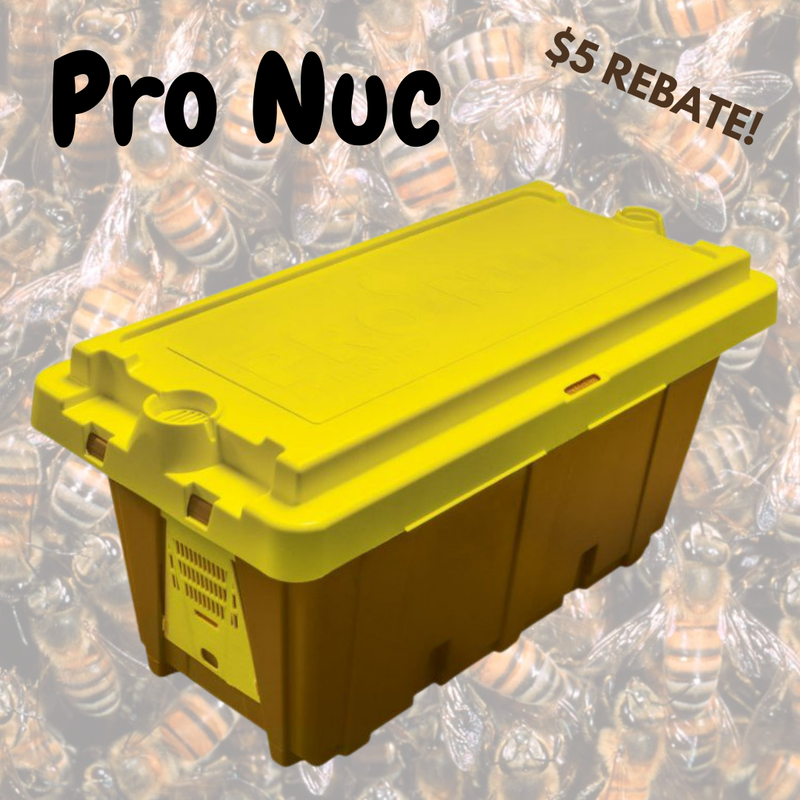
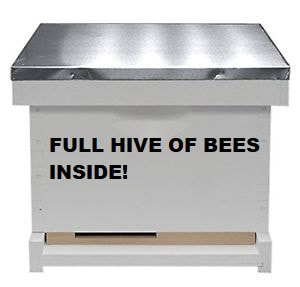
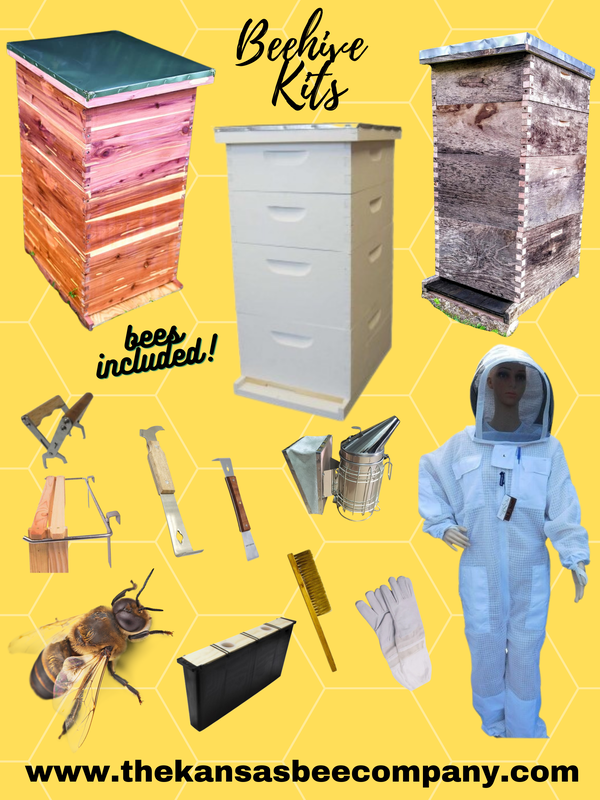
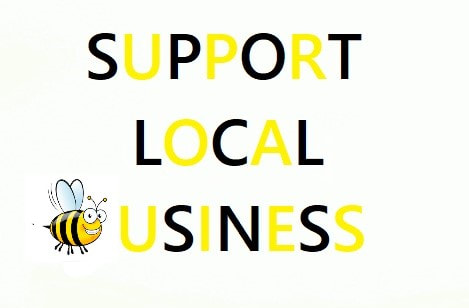
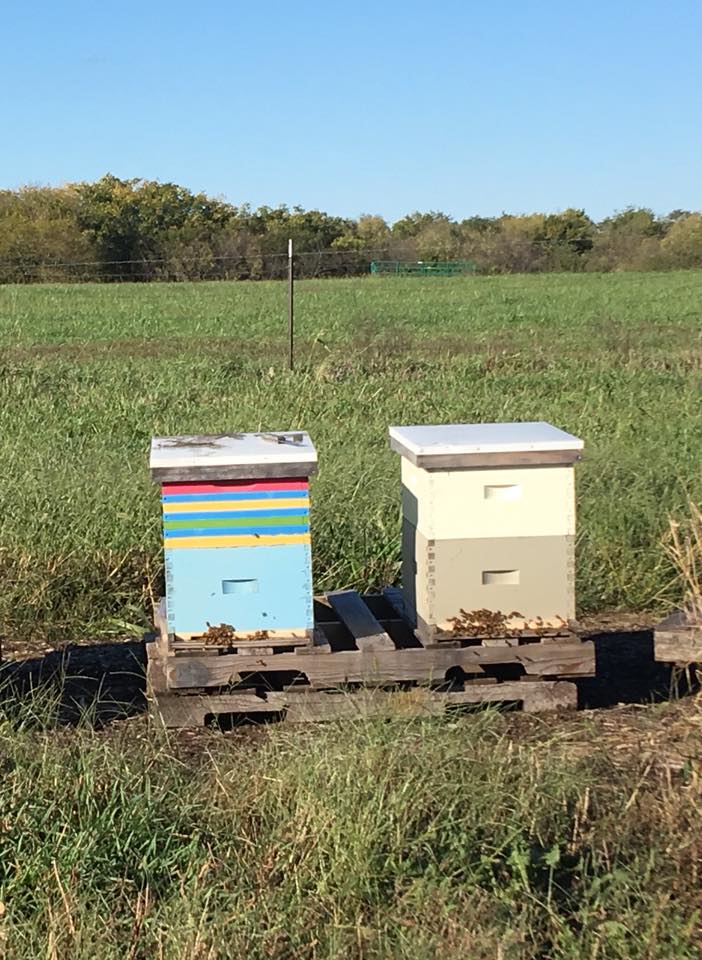
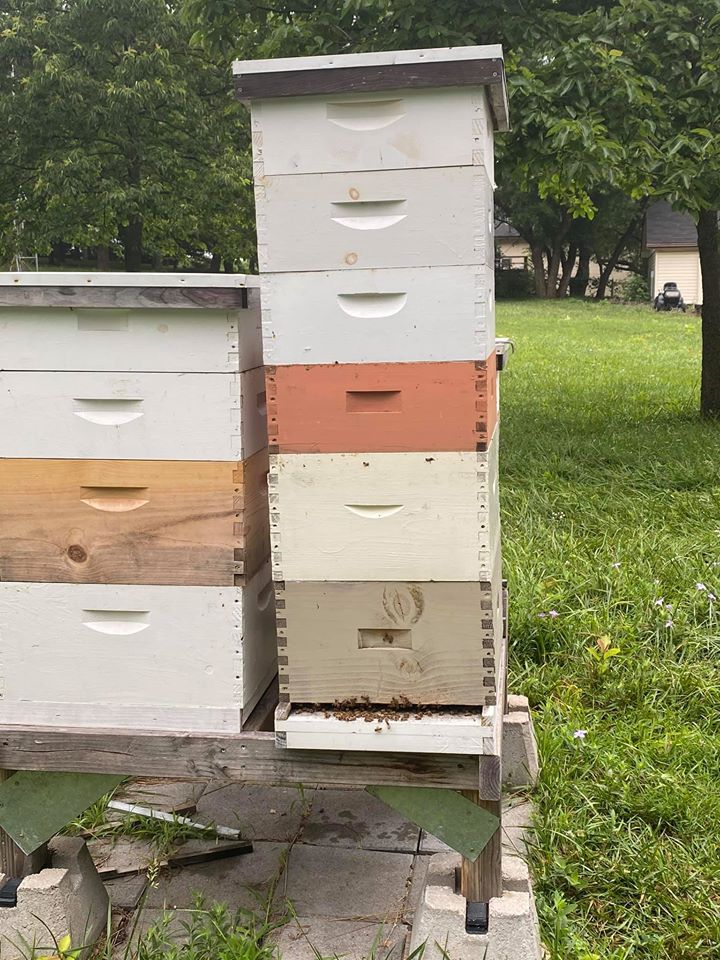
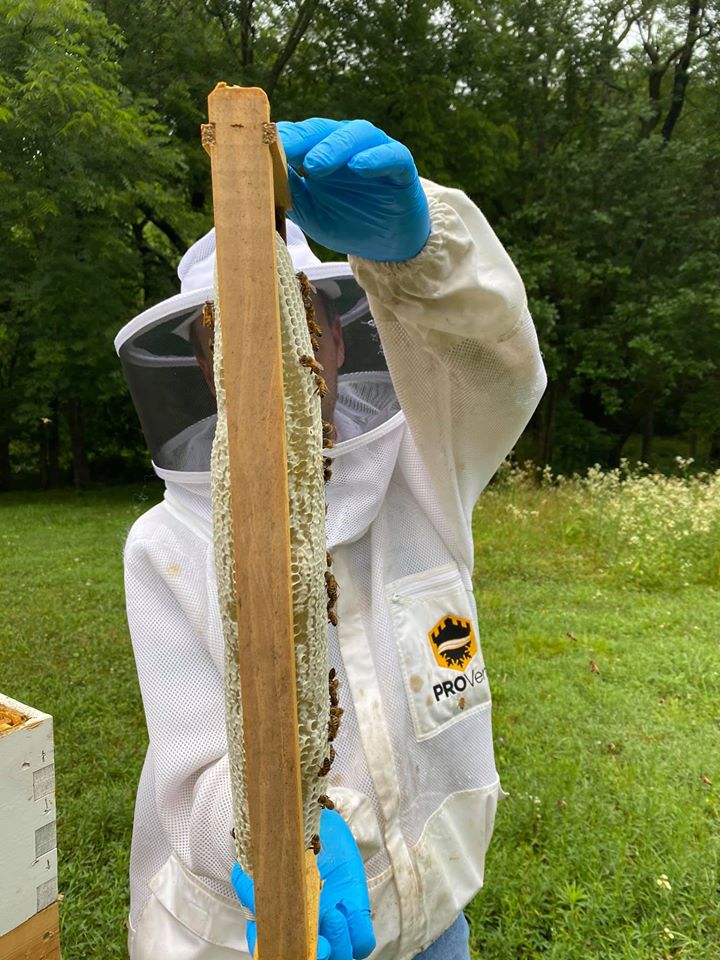
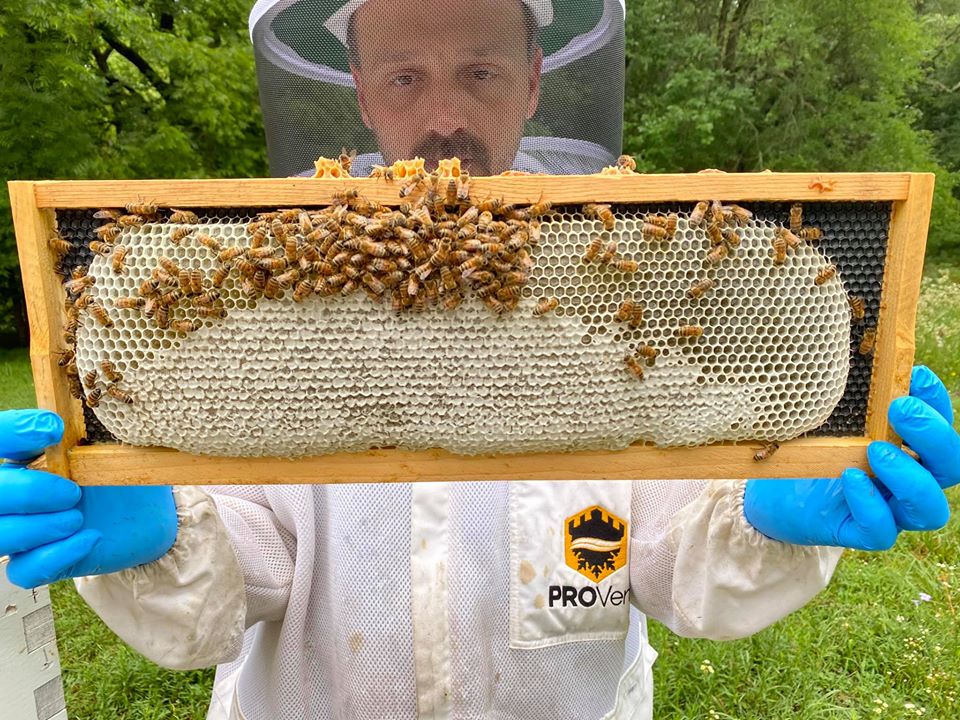
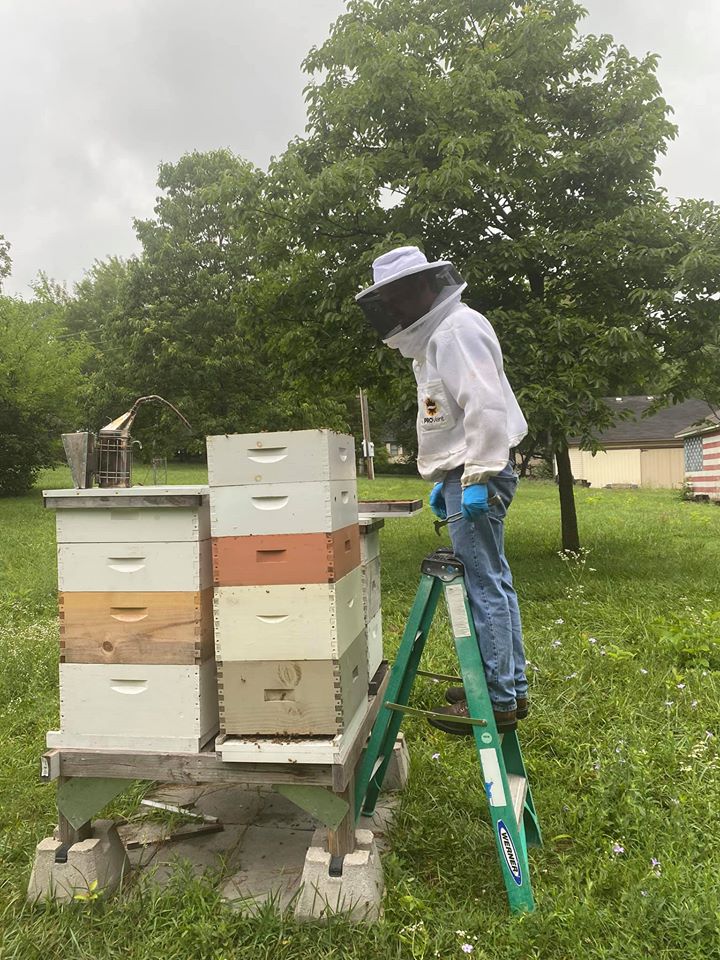
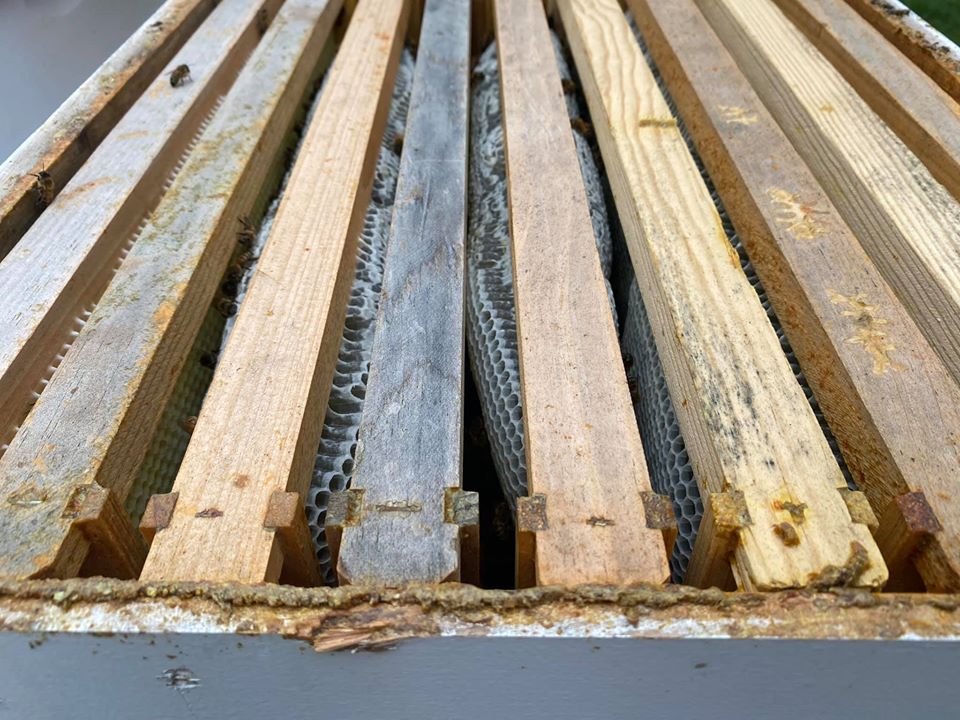
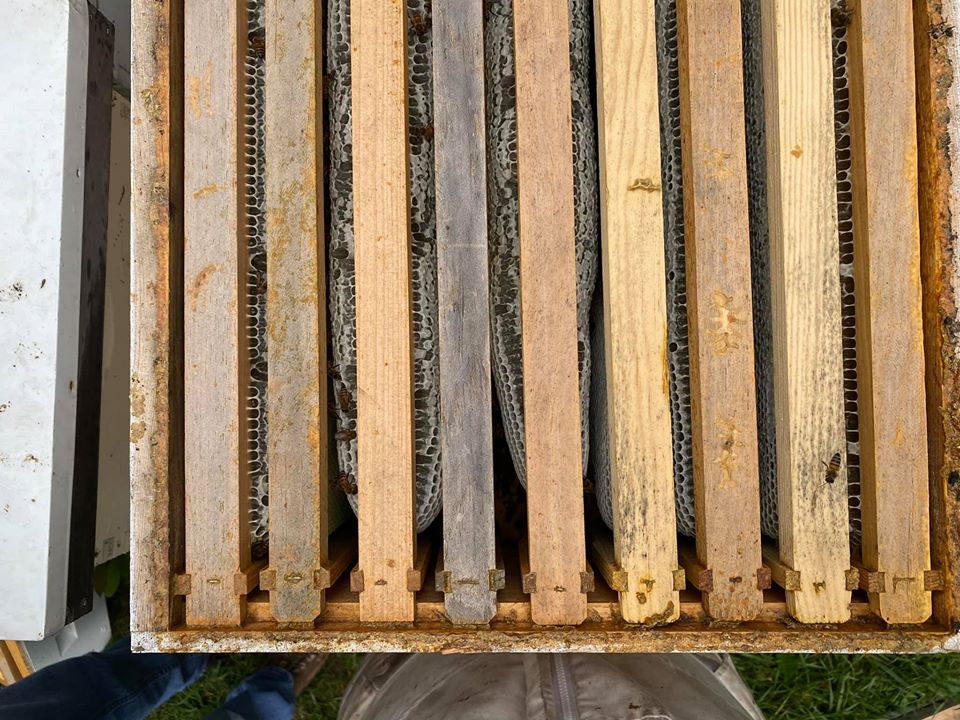
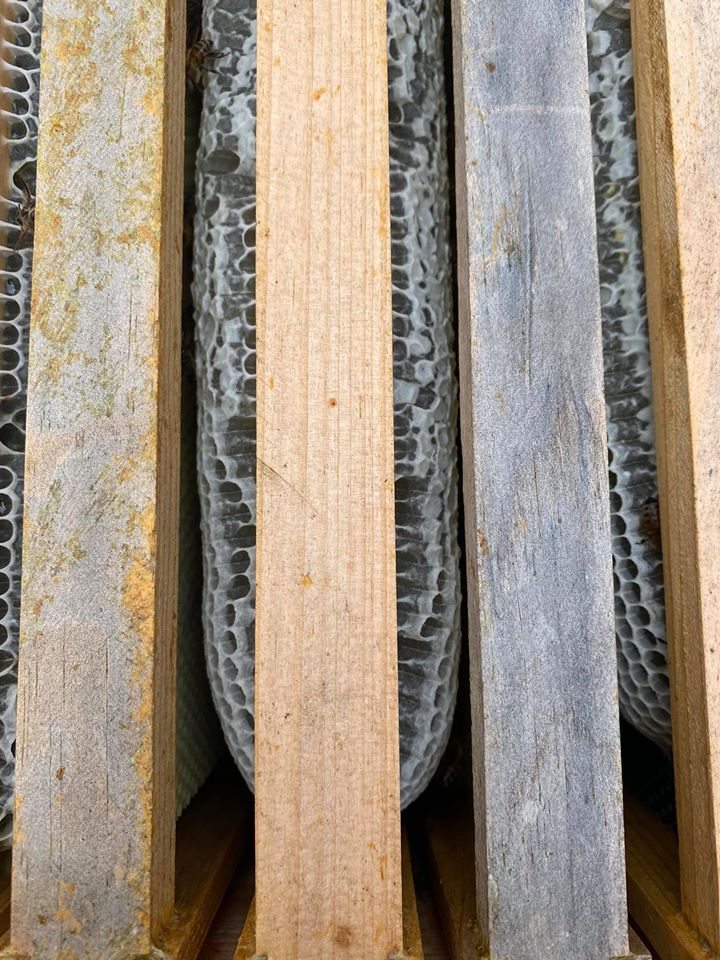

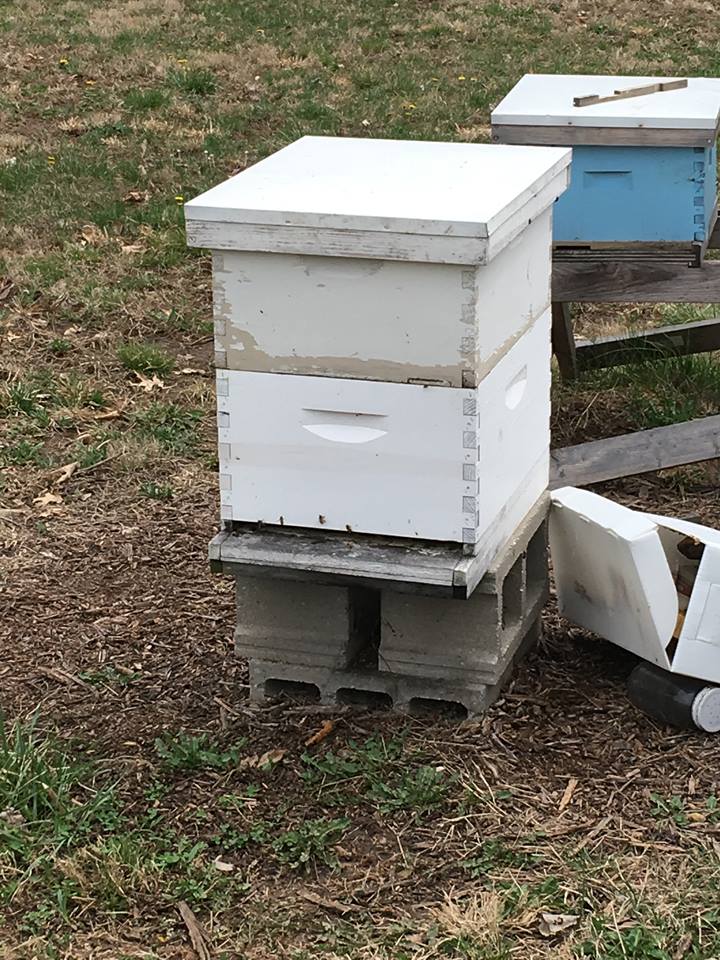
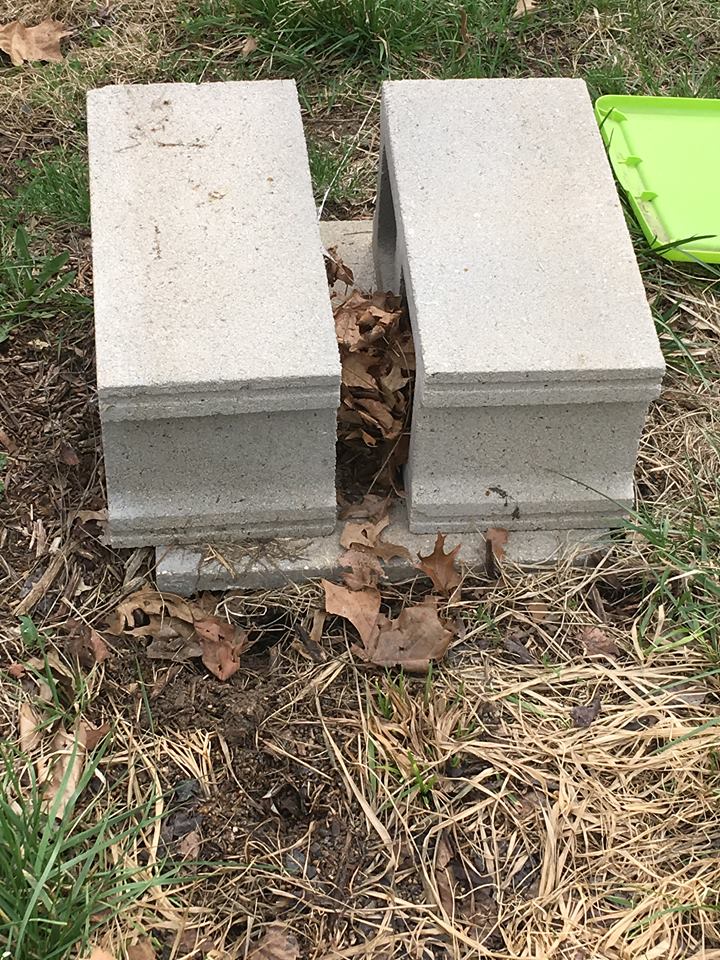
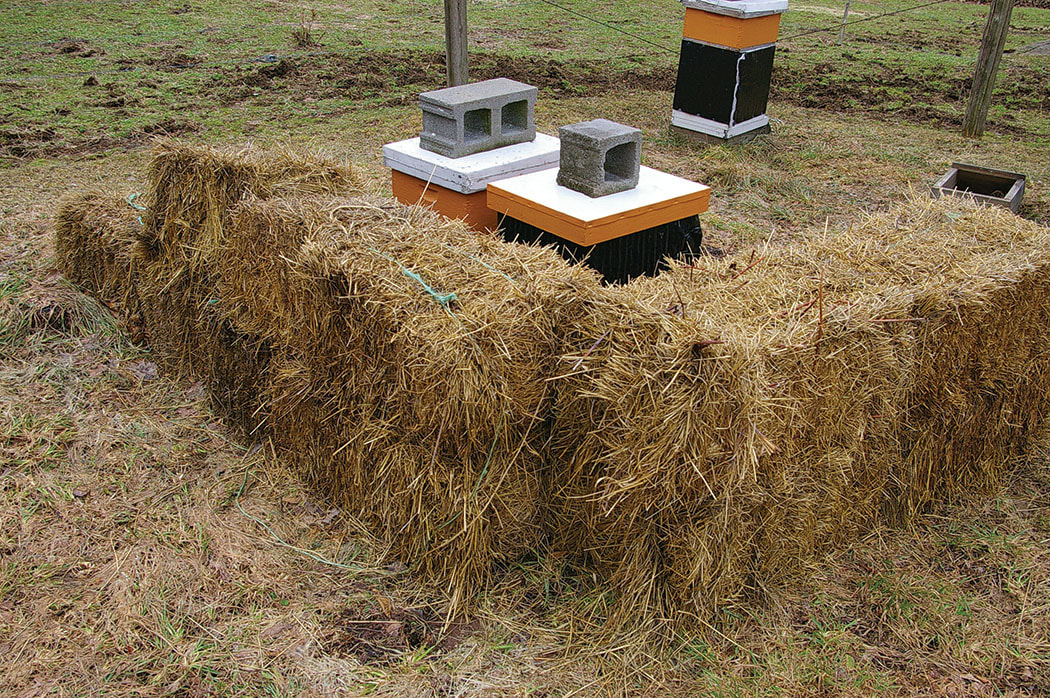
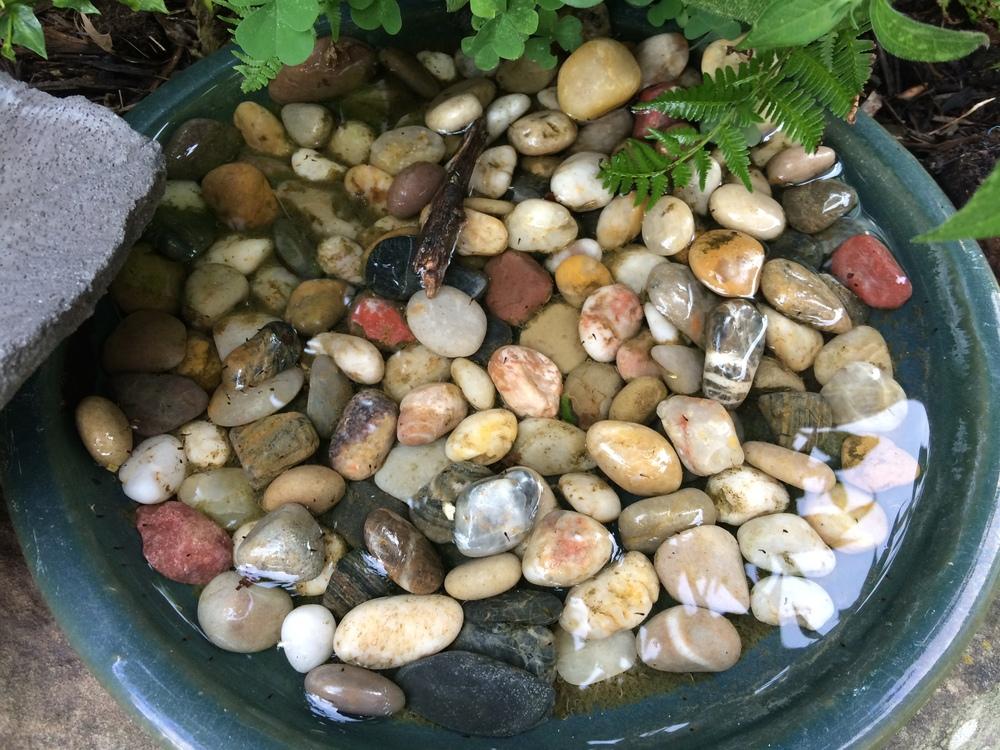
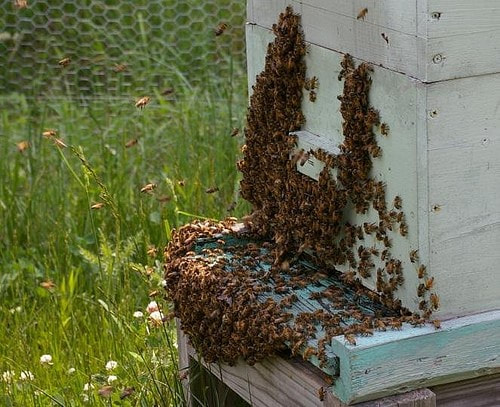
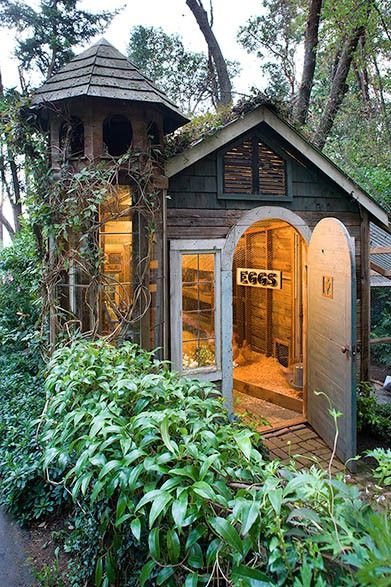
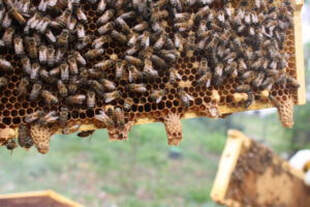
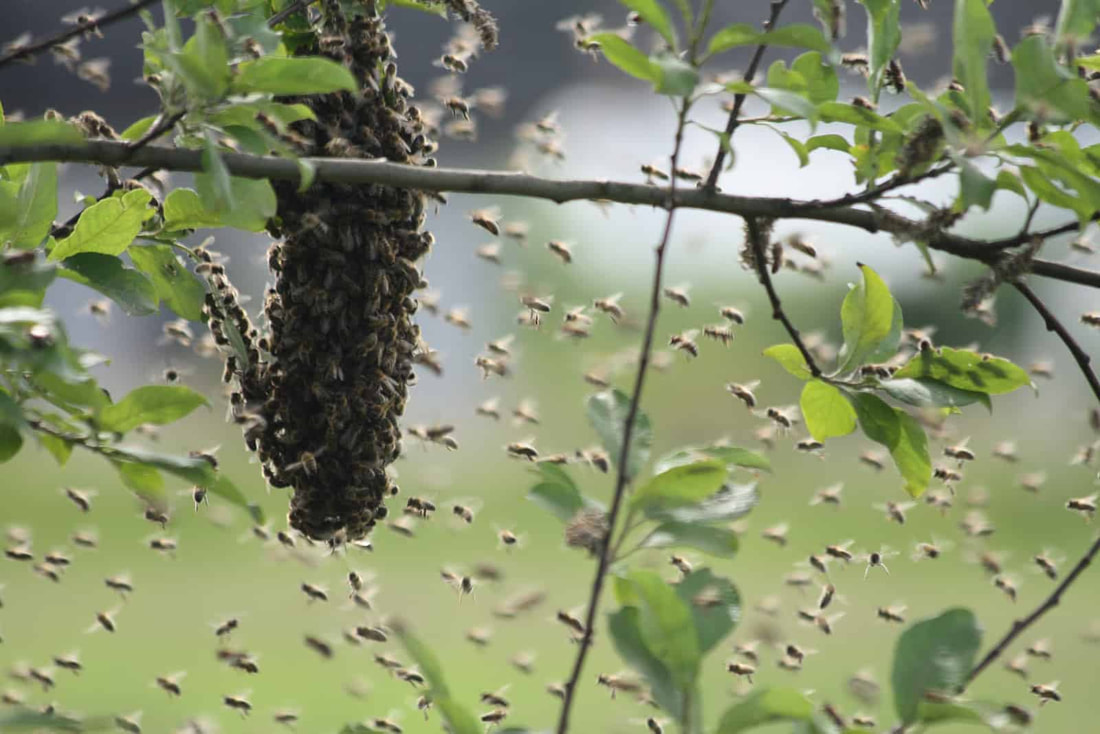

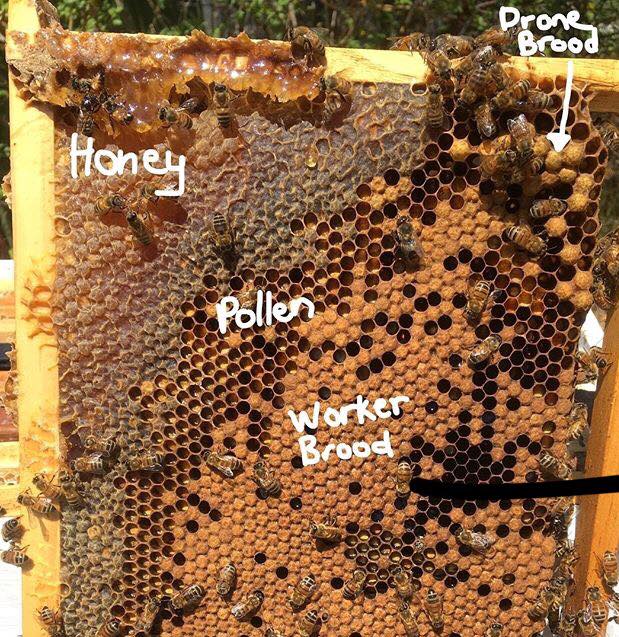
 RSS Feed
RSS Feed